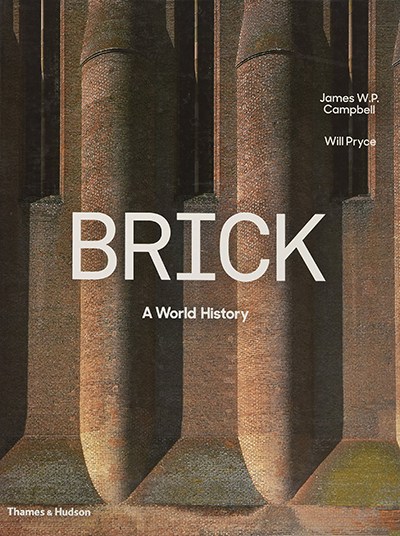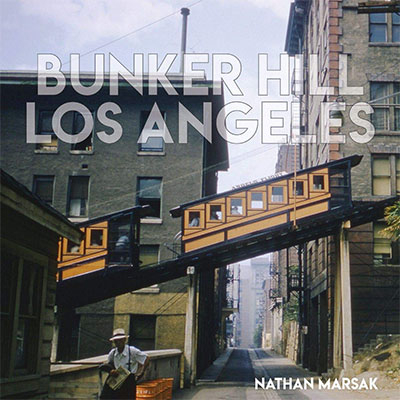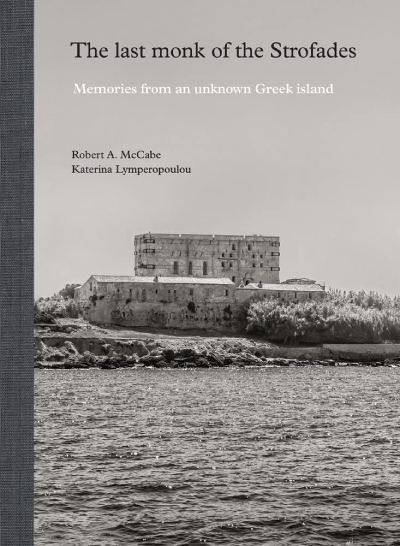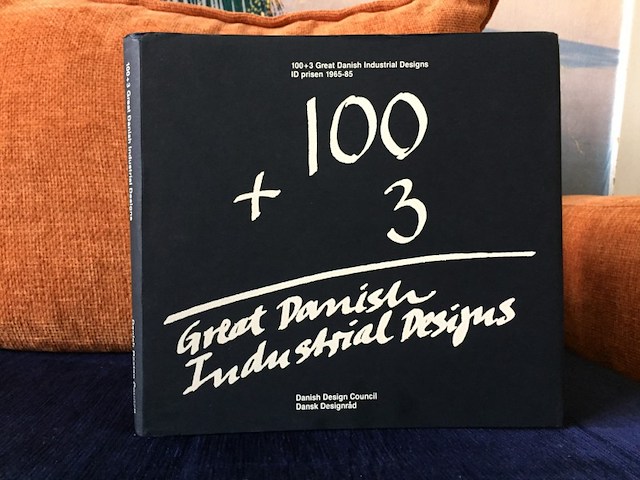Pratite promene cene putem maila
- Da bi dobijali obaveštenja o promeni cene potrebno je da kliknete Prati oglas dugme koje se nalazi na dnu svakog oglasa i unesete Vašu mail adresu.
1-4 od 4 rezultata
Broj oglasa
Prikaz
1-4 od 4
1-4 od 4 rezultata
Prikaz
Prati pretragu "slicni:46825307 STORY OF MODERN ARCHITECTURE"
Vi se opustite, Gogi će Vas obavestiti kad pronađe nove oglase za tražene ključne reči.
Gogi će vas obavestiti kada pronađe nove oglase.
Režim promene aktivan!
Upravo ste u režimu promene sačuvane pretrage za frazu .
Možete da promenite frazu ili filtere i sačuvate trenutno stanje
Aktivni filteri
-
Cena
3,000 din - 3,999 din
-
Kolekcionarstvo i umetnost chevron_right Knjige
Brick: A World History This totally original architecture book – the first ever comprehensive study of brick – follows the story of brick from 5,000 bc to its use in building today, via the vast baths and basilicas of ancient Rome, through the wonders of Gothic brick in Germany, the majestic temples of Pagan and Mughal mosques in Iran, to its modern revival. Marvellously illustrated with spectacular, specially-taken photographs, Brick is at once an historical account of how bricks have been employed by architects of every period, a technical survey of brickmaking and bricklaying, and an essay in architectural and cultural history. The authors have applied their expert visual and technical knowledge to more than one hundred themes, from bricks in ancient Egypt to their distinctive use by such modern masters as Louis Kahn, Alvar Aalto and Renzo Piano. Great works of engineering – viaducts, tunnels and bridges – are given prominence alongside great cathedrals and country houses, temples and mosques, testifying to the incredible versatility and importance of bricks and brickwork.
-
Kolekcionarstvo i umetnost chevron_right Knjige
Bunker Hill Los Angeles: Essence of Sunshine and Noir Bunker Hill is the highest point of downtown Los Angeles, both literally and figuratively. Its circle of life has created a continuous saga of change, each chapter rich with captivating characters, structures, and culture. In Bunker Hill Los Angeles: Essence of Sunshine and Noir, historian Nathan Marsak tells the story of the Hill, from the district's inception in the mid-19th century to its present day. Once home to wealthy Angelenos living in LA's "first suburb," then the epicenter of the city's shifting demographics and the shadow and vice of an urban underbelly, Bunker Hill survived its attempted erasure and burgeoned as a hub of arts, politics, business, and tourism. As compelling as the story of the destruction of Bunker Hill is--with all the good intentions and bad results endemic to city politics--it was its people who made the Hill at once desirable and undesirable. Marsak commemorates the poets and writers, artists and activists, little guys and big guys, and of course, the many architects who built and rebuilt the community on the Hill--time after historic time. Any fan of American architecture will treasure Marsak's analysis of buildings that have crowned the Hill: the exuberance of Victorian shingle and spindlework, from Mission to Modern, from Queen Anne to Frank Gehry, Bunker Hill has been home to it all, the ever-changing built environment. With more than 250 photographs--many in color--as well as maps and vintage ephemera to tell his dramatic visual story, Marsak lures us into Bunker Hill Los Angeles and shares its lost world, then guides us to its new one. Nathan Marsak studied under the eminent historian of Los Angeles, Reyner Banham, at University of California, Santa Cruz, and completed his graduate work with noted Sullivan/Wright scholar Narciso Menocal at University of Wisconsin, Madison. He worked on the curatorial staff of Los Angeles Museum of Contemporary Art and served as historian for the LAPD Museum archives. Bunker Hill Los Angeles is his second book; his first was Los Angeles Neon (2002). Prikaži više
-
Kolekcionarstvo i umetnost chevron_right Knjige
The Last Monk of the Strofades: Memories from an Unknown Greek Island The story, in photographs, of the last caretaker of the ancient monastery on the remote, windswept Strofades islands - an architectural and historical treasure now in danger of destruction The Strofades: two small, flat, windswept islands rising out of the Ionian Sea, known to the ancient Greeks as the home of the terrible Harpies, and to most modern Greeks simply unknown. On the larger of the two islets, Stamfani, stands a massive fortified monastery, founded as early as the thirteenth century, for centuries a refuge for honest seafarers and a target for pirates and Turkish raiders. In its heyday, this imposing compound was home to some forty farmer-monks, who kept the entire island under cultivation; by 1976, it was home to just one, Father Gregory Kladis (1937–2017), who alone tended the monastery until 2014. Today the monastery―badly damaged by an earthquake in 1997―lies empty and in danger of ruin. This book is intended to tell the world about the Holy Monastery at Strofades, and encourage its preservation. At its core are the words of the last monk himself, Father Gregory, who guides the reader through his historic monastery―its chapels, refectory, mills, bakehouse, and living quarters―and the natural beauties of its island setting, as depicted in Robert McCabe’s superb photographs. The testimonies of the boatman who brought Father Gregory his supplies, as well as the lighthouse keeper who was once his only companion on the island, lend texture and context―as do essays on the history, geology, and architecture of the Strofades, and architectural drawings that reconstruct the monastery’s phases of construction. Nobody who peruses this volume―the result of a years-long collaboration between more than a dozen researchers and friends of the Strofades―will be able to forget the islands’ last monk, or be unmoved by the plight of his monastery. Prikaži više
100 + 3 Great Danish Industrial Designs: ID Prisen 1965-85 Odlična Kao nova Bernsen, Jens (editor) Published by Danish Design Council, U.S.A. (1985) Danish design is a style of functionalistic design and architecture that was developed in mid-20th century. Influenced by the German Bauhaus school, many Danish designers used the new industrial technologies, combined with ideas of simplicity and functionalism to design buildings, furniture and household objects, many of which have become iconic and are still in use and production. Prominent examples are the Egg chair, the PH lamps and the Sydney Opera House (Australia). Arne Jacobsen`s clock in the Glostrup Town Hall, Glostrup, Denmark History Edit See also: Danish modern The Danish Culture Canon credits Thorvald Bindesbøll (1846–1908) with early contributions to design in the areas of ceramics, jewellery, bookbinding, silver and furniture although he is known in the rest of the world for creating the Carlsberg logo (1904), still in use today.[1] The Canon also includes Knud V. Engelhardt (1882–1931) for a more industrial approach, especially in the rounded contours of his electric tramcar designs which were widely copied.[2] In the area of textiles, Marie Gudme Leth (1895–1997) brought the screen printing process to Denmark, opening a factory in 1935 which allowed her colourful patterns to be manufactured on an industrial basis.[3] August Sandgren introduced functionalism in the design of his masterful bookbindings. The forms and materials of Hans Wegner`s Wishbone Chair are representative of the movement`s aesthetic In the late 1940s, shortly after the end of the Second World War, conditions in Denmark were ideally suited to success in design. The emphasis was on furniture but architecture, silver, ceramics, glass and textiles also benefitted from the trend. Denmark`s late industrialisation combined with a tradition of high-quality craftsmanship formed the basis of gradual progress towards industrial production. After the end of the war, Europeans were keen to find novel approaches such as the light wood furniture from Denmark. Last but not least, support in Denmark for freedom of individual expression assisted the cause.[4] The newly established Furniture School at the Royal Danish Academy of Art played a considerable part in the development of furniture design. Kaare Klint taught functionalism based on the size and proportions of objects, wielding considerable influence. Hans J. Wegner, who had been trained as a cabinetmaker, contributed with a unique sense of form, especially in designing chairs.[5] As head of FDB Møbler, Børge Mogensen designed simple and robust objects of furniture for the average Danish family. Finn Juhl demonstrated an individualistic approach in designing chairs with an appealing but functional look. In the early 1950s, American design also influenced Danish furniture. The American Charles Eames designed and manufactured chairs of moulded wood and steel pipes. These encouraged Arne Jacobsen to design his worldfamous Ant Chair, Denmark`s first industrially manufactured chair. Furthermore, as Shaker furniture—and especially its reputation for stripped down chairs—began to be more and more known abroad, it also influenced Danish designers.[6] Poul Kjærholm, Verner Panton and Nanna Ditzel followed a few years later, continuing the successful story of Danish design. Kjærholm worked mainly in steel and leather, Panton left Denmark during the 1960s to continue designing imaginative but highly unconventional plastic chairs while Nanna Ditzel, who also had a strongly individualistic approach, was successful in helping to renew Danish furniture design in the 1980s. Modern trends Edit Bernadotte`s thermos jug, 2004 During the 1970s, Verner Panton made some of his most important designs, including the Pantonova and the 1-2-3 System. Danish furniture design during the 1980s did not include prominent contributions. By contrast, industrial designers began to prosper, making use of principles such as focus on the user, as well as attention to materials and to detail. For example, there are well known Danish designers, like Tobias Jacobsen (the grandson of Arne Jacobsen), who focused on the single elements of a violin when creating his chair `Vio` or on a boomerang when designing his eponymous sideboard.[7] The Bernadotte & Bjørn studio, established in 1950, was the first to specialise in industrial design, with an emphasis on office machines, domestic appliances and functional articles such as the thermos jug. The electronics manufacturer Bang & Olufsen, in collaboration with Bernadotte & Bjørn and later with Jacob Jensen and David Lewis, went on to excel in modern design work. Around the same time, the Stelton company collaborated with Arne Jacobsen and Erik Magnussen to produce their iconic vacuum jug, a huge international success. Another successful design field is medical technology. Danish design companies like 3PART, Designit and CBD have worked in this area with individual designers such as Steve McGugan and Anders Smith. In 2002 the Danish Government and the City of Copenhagen launched an effort to establish a world event for design in Copenhagen. Originally understood as a tool for branding traditional Danish design, the non-profit organization INDEX: shifted focus after worldwide research and coined the concept of Design to Improve Life, which rapidly became celebrated in Denmark and around the world. The organization now hands out the biggest design award in the world biannual in Copenhagen, tours large scale outdoor exhibition around the world, run educational program as well as design labs and hosts a global network.[citation needed] Today, there is strong focus on design in Denmark as industry increasingly appreciates the importance of design in the business environment. In addition, as part of its trade and industry policy, the Danish government has launched the DesignDenmark initiative which aims to restore Denmark to the international design elite.[8] Architecture Edit Utzon`s Sydney Opera House, 1973 See also: Architecture of Denmark Modern architecture has also contributed to the concept of Danish design. Århus City Hall, Århus, Denmark Arne Jacobsen was not just a furniture designer but one of the leading architects of his times. Among his achievements are the Bellevue Theater and restaurant, Klampenborg (1936), the Århus City Hall (with Erik Møller; 1939–42) and the SAS Royal Hotel (1958–60).[9] Jørn Utzon (1918–2008), Denmark`s most widely recognized architect, is remembered for his expressionist Sydney Opera House (1966) and the later Bagsværd Church (1976) with its wavy concrete roof.[10] Henning Larsen (b. 1925) is the architect who designed the boldly modern Copenhagen Opera House on the island of Holmen which was completed in 2005.[11] Danish architecture is currently in a new-wave era, not receiving more attention since the golden age of Arne Jacobsen and Jørn Utzon, being focused on function and concept rather than aesthetics and an impeccable finish.[12] Bjarke Ingels of Bjarke Ingels Group (BIG) and Dan Stubbergaard`s architectural firm Cobe who met at the former drawing office Plot,[13] are both part of the new wave. Mentionable projects are BIG`s Amager Bakke (Copenhill) and Cobe`s Nørreport Station.[14] Recent achievements Edit Today, the concept of Danish design is thriving in an ever-wider number of fields. Among recent highlights are: The Museum of Modern Art in New York has chosen to outfit 95% of its new Yoshio Taniguchi-designed home with furniture by Danish design company GUBI. The Danish Zenvo ST1 supercar.[15][16] The Evita Peroni suite of women`s accessories which now has some 300 stores in 30 countries.[17] The Halifax Central Library in Halifax, Nova Scotia, Canada, was designed by the Danish architectural firm Schmidt Hammer Lassen. After it was completed in 2014, it has received widespread acclaim[18][19] and several architecture awards.[20][21] Designers Edit Among the most successful designers associated with the concept are Børge Mogensen (1914–72), Finn Juhl (1912–89), Hans Wegner (1914–2007), Arne Jacobsen (1902–71), Poul Kjærholm (1929–80), Poul Henningsen (1894–1967) and Verner Panton (1926–98).[22] Other designers of note include Kristian Solmer Vedel (1923–2003) in the area of industrial design, Jens Harald Quistgaard (1919–2008) for kitchen furniture and implements, Gertrud Vasegaard (1913–2007) for ceramics, and Ole Wanscher (1903–85), who had a classical approach to furniture design. Museums Edit The Danish Museum of Art & Design (or, Designmuseum Denmark) in Copenhagen exhibits many of the artifacts associated with Danish design, especially furniture. The New York Museum of Modern Art also has a large Danish design collection.[23] The Danish Design Centre in the centre of Copenhagen has both permanent and special exhibitions promoting Danish design.[24] Danski centar za dizajn (DDC) je dansko nacionalno središte za dizajn. Osnovana je 1978. godine, polujavna je organizacija pod danskim Ministarstvom poslovanja, industrije i financijskih poslova. Uloga DDC-a je promicati upotrebu dizajna u poslovanju i industriji, pomoći u profesionalizaciji dizajnerske industrije te dokumentirati, promovirati i brendirati danski dizajn u Danskoj i inozemstvu. DDC djeluje na sjecištu poslovanja i industrije, dizajnerske struke, obrazovnih i istraživačkih institucija i javnih institucija, na nacionalnoj i međunarodnoj razini. Danski dizajn centar ukorijenjen je u danskoj povijesti dizajna i u vrijednostima danskog dizajna, ali orijentiran je ka budućnosti. Službena misija je `korištenje dizajna kao mogućnosti transformacije`, a centar je organiziran u pet platformi: Design Cities, Future Health, Design Startup, Design Resource i Next Business. Danski centar za dizajn nalazi se u BLOX-u, čvorištu za dizajn, arhitekturu i urbane inovacije u Kopenhagenu, a izvršni direktor je Christian Bason.Wikipedia site:hr2.wiki Lego dizajn dizajneri iz danske danci iz danske danska umetnost xx veka 20. vek




